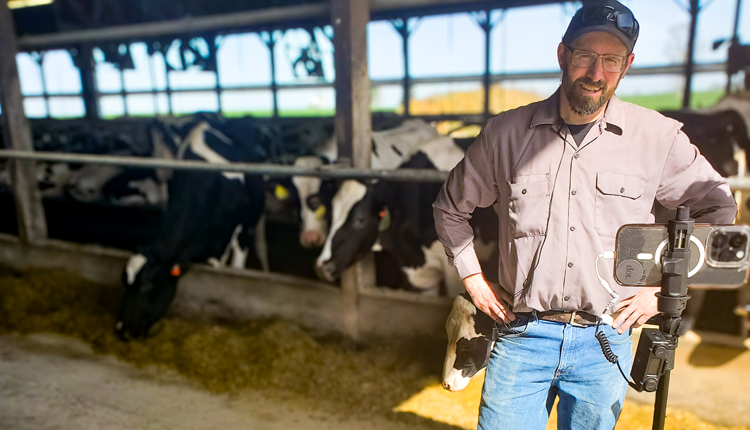The dairy product sector has seen great transformation. At one time, milkmen were delivering glass bottles of milk and a few other limited products. Today, every grocery store has a dairy aisle filled with an array of nutritious, protein-dense dairy foods.
One protein source of dairy descent that has seen tremendous growth is whey. Research in the area of whey has erupted recently. There was very little published data on the topic before 1990, but more than 240 articles were published in 2013.
"There's been an explosion of high protein products the last 5, 10, 15 years," said Brian Helwig, Director of Protein Nutrition Research at the Dairy Research Institute, when he spoke at the International Cheese Technology Expo.
Protein is not just a fad; it's a necessity of life. But how much protein do we need? The RDA (Recommended Dietary Allowances) says to consume 0.8 grams per kilogram of body mass. This level is based on protein breakdown characteristics, maintenance needs of body tissues and functions and the health status of the individual, including pregnancy, physical activity level, injury and age.
The RDA level is the minimum, not necessarily the optimum, explained Helwig. "What is the optimal amount? This is the golden question," he said.
Another question in consideration is whether or not protein intake should be higher as we age. Helwig noted that sarcopenia, the loss of muscle mass and muscle function associated with aging, is normal and expected. However, a decline in protein intake because of cost, decreased appetite and digestive and metabolic changes definitely plays a role in aging individuals, he said.
Average loss of muscle mass is 0.5 to 1 percent per year beginning at age 40, according to Helwig. Sarcopenia affects 30 percent of people over 60 years old and 50 percent of people over 80, he said.
Research has shown that consuming 20 grams of whey protein achieves the maximum muscle building stimulation in young adults when accompanied by resistance exercise. For aged subjects, 35 to 40 grams of whey protein with resistance activity attained maximum muscle building.
These results suggest that older people would benefit from higher protein intake. With an 80 percent expansion in the elderly population expected from 2000 to 2025, there lies an opportunity for the dairy aisle to fill that growing need for protein, Helwig said.

The author is an associate editor and covers animal health, dairy housing and equipment, and nutrient management. She grew up on a dairy farm near Plymouth, Wis., and previously served as a University of Wisconsin agricultural extension agent. She received a master's degree from North Carolina State University and a bachelor's from University of Wisconsin-Madison.
One protein source of dairy descent that has seen tremendous growth is whey. Research in the area of whey has erupted recently. There was very little published data on the topic before 1990, but more than 240 articles were published in 2013.
"There's been an explosion of high protein products the last 5, 10, 15 years," said Brian Helwig, Director of Protein Nutrition Research at the Dairy Research Institute, when he spoke at the International Cheese Technology Expo.
Protein is not just a fad; it's a necessity of life. But how much protein do we need? The RDA (Recommended Dietary Allowances) says to consume 0.8 grams per kilogram of body mass. This level is based on protein breakdown characteristics, maintenance needs of body tissues and functions and the health status of the individual, including pregnancy, physical activity level, injury and age.
The RDA level is the minimum, not necessarily the optimum, explained Helwig. "What is the optimal amount? This is the golden question," he said.
Another question in consideration is whether or not protein intake should be higher as we age. Helwig noted that sarcopenia, the loss of muscle mass and muscle function associated with aging, is normal and expected. However, a decline in protein intake because of cost, decreased appetite and digestive and metabolic changes definitely plays a role in aging individuals, he said.
Average loss of muscle mass is 0.5 to 1 percent per year beginning at age 40, according to Helwig. Sarcopenia affects 30 percent of people over 60 years old and 50 percent of people over 80, he said.
Research has shown that consuming 20 grams of whey protein achieves the maximum muscle building stimulation in young adults when accompanied by resistance exercise. For aged subjects, 35 to 40 grams of whey protein with resistance activity attained maximum muscle building.
These results suggest that older people would benefit from higher protein intake. With an 80 percent expansion in the elderly population expected from 2000 to 2025, there lies an opportunity for the dairy aisle to fill that growing need for protein, Helwig said.

The author is an associate editor and covers animal health, dairy housing and equipment, and nutrient management. She grew up on a dairy farm near Plymouth, Wis., and previously served as a University of Wisconsin agricultural extension agent. She received a master's degree from North Carolina State University and a bachelor's from University of Wisconsin-Madison.











